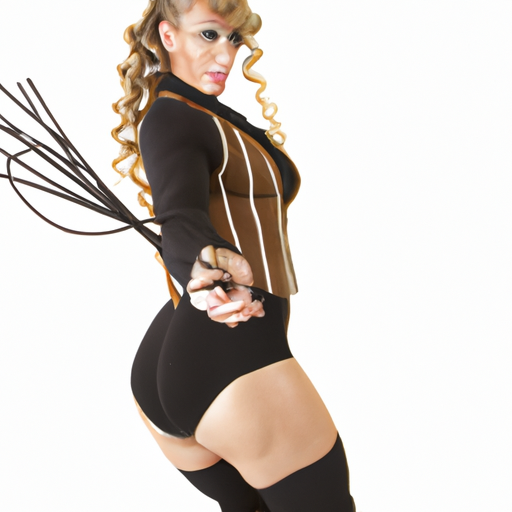Understanding Submissive Men and Their Desire for Femdom

Submissive men and their desire for femdom have long been subjects of curiosity and misunderstanding. The dynamics of power exchange and the psychological intricacies involved in femdom relationships often lead to misconceptions and misinterpretations. In this blog post, we aim to debunk some of the common misconceptions about submissive men and their desire for femdom, shedding light on the complexities and nuances of this often-misunderstood aspect of human sexuality and relationships.
Misconception #1: Submissive men are weak or lack confidence.
One of the most prevalent misconceptions about submissive men is that they are inherently weak or lack confidence. This couldn’t be further from the truth. Submissiveness is not synonymous with weakness; rather, it is a deeply ingrained aspect of an individual’s sexuality and desires. Many submissive men are accomplished, confident, and assertive in their professional and personal lives. Their inclination towards submission in the context of a femdom relationship is a reflection of their authentic desires and preferences, rather than a reflection of their overall confidence or strength.
Misconception #2: Submissive men want to be dominated in all aspects of their lives.
Another common misconception is that submissive men seek to be dominated in every aspect of their lives. While some individuals may indeed desire a 24/7 power exchange dynamic, the reality is that the desire for femdom is often compartmentalized within specific contexts or relationships. Submissive men may crave the power dynamic within the confines of a consensual, negotiated femdom relationship, while maintaining autonomy and independence in other areas of their lives. Understanding that submissive men are multifaceted individuals with diverse needs and desires is crucial in dispelling this misconception.
Misconception #3: Submissive men are passive and lack agency.
Contrary to popular belief, submissive men are not passive individuals devoid of agency. In a femdom dynamic, the submissive partner actively consents to relinquishing control within predetermined boundaries, thereby exercising agency in their decision to submit. The negotiation of power dynamics, the establishment of boundaries, and the ongoing communication within a femdom relationship all underscore the agency and active participation of the submissive partner. It is essential to recognize that the desire for submission does not equate to passivity, but rather reflects a deliberate, consensual choice.
Misconception #4: Submissive men are not ‘real’ men.
A damaging misconception surrounding submissive men is the notion that their desire for femdom undermines their masculinity or ‘realness’ as men. This harmful stereotype perpetuates the fallacious belief that masculinity is contingent upon dominance and control, neglecting the diverse spectrum of male sexuality and expressions of masculinity. Submissive men are no less ‘real’ or masculine by virtue of their desires; rather, their authenticity lies in embracing and expressing their genuine inclinations, free from societal expectations and rigid gender norms.
Misconception #5: Femdom relationships are inherently abusive.
Perhaps one of the most pervasive misconceptions about femdom is the conflation of consensual power exchange dynamics with abuse. Femdom relationships are rooted in trust, communication, and mutual consent, distinguishing them from abusive dynamics devoid of consent and respect. Contrary to popular misconceptions, femdom relationships prioritize the well-being and fulfillment of all involved parties, emphasizing the importance of enthusiastic consent and aftercare. Understanding the clear distinction between healthy, consensual femdom dynamics and abusive relationships is imperative in dispelling this harmful misconception.
In conclusion, the misconceptions surrounding submissive men and their desire for femdom often stem from societal stereotypes, misinformation, and a lack of understanding of diverse expressions of human sexuality and relationships. By challenging these misconceptions, fostering open dialogue, and embracing the complexities of femdom dynamics, we can cultivate a more inclusive, empathetic understanding of submissive men and their authentic desires. It is crucial to approach discussions of femdom with respect, open-mindedness, and a commitment to dismantling harmful misconceptions, ultimately fostering a culture of acceptance, understanding, and celebration of diverse expressions of human sexuality. Click here for info.
What are some potential challenges or obstacles a chastity mistress may face in her role?
As a chastity mistress, one takes on a unique and delicate role in the realm of BDSM and fetish play. The responsibilities and challenges that come with this role are often misunderstood by those outside the community. In this blog post, we will explore some of the potential challenges and obstacles that a chastity mistress may face in her role, shedding light on the complexities and nuances of this intriguing dynamic.

First and foremost, a chastity mistress must possess a deep understanding of the psychological and emotional aspects of chastity play. The ability to communicate effectively with the submissive, understanding their desires, boundaries, and triggers, is paramount. Building and maintaining trust is essential in this dynamic, as the submissive entrusts the chastity mistress with their most intimate desires and vulnerabilities. Navigating the emotional landscape of denial, frustration, and longing requires empathy, patience, and a keen understanding of power dynamics.
Furthermore, the physical aspects of chastity play present their own set of challenges. Ensuring the safety and well-being of the submissive during prolonged periods of chastity requires a thorough knowledge of anatomy, hygiene, and potential health risks. The use of chastity devices demands a high level of skill and attention to detail to prevent injury or discomfort. Additionally, regular check-ins and communication are essential to monitor any physical or psychological distress that may arise from extended periods of chastity.
In the broader context, societal stigma and misconceptions surrounding BDSM and fetish play pose significant challenges for chastity mistresses. Navigating judgment, discrimination, and misconceptions from the outside world can be emotionally taxing. Educating oneself and others about the consensual and respectful nature of BDSM is an ongoing effort, as is advocating for the rights and safety of those within the community.
Moreover, the emotional labor involved in being a chastity mistress should not be overlooked. Providing emotional support, guidance, and reassurance to the submissive requires a considerable investment of time and energy. Managing one’s own emotional boundaries and well-being while fulfilling the needs of the submissive is a delicate balancing act that demands self-awareness and self-care.
Additionally, the ethical considerations inherent in the role of a chastity mistress are complex and multifaceted. Ensuring that all activities are consensual, safe, and respectful is a non-negotiable aspect of the role. Navigating the fine line between power exchange and exploitation requires a deep commitment to ethical conduct and ongoing self-reflection.
In conclusion, the role of a chastity mistress is multifaceted, demanding a unique blend of psychological insight, physical expertise, emotional labor, and ethical responsibility. Navigating the challenges and obstacles inherent in this role requires a deep commitment to understanding, empathy, and ongoing education. By shedding light on the complexities of this dynamic, we hope to foster a greater understanding and appreciation for the intricacies of chastity play within the BDSM community.